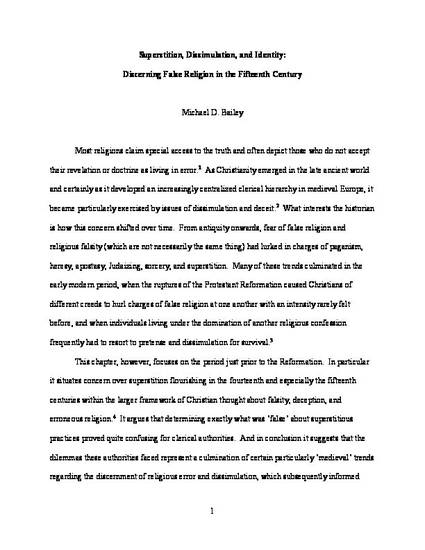
Most religions claim special access to the truth and often depict those who do not accept their revelation or doctrine as living in error.1 As Christianity emerged in the late ancient world and certainly as it developed an increasingly centralized clerical hierarchy in medieval Europe, it became particularly exercised by issues of dissimulation and deceit.2 What interests the historian is how this concern shifted over time. From antiquity onwards, fear of false religion and religious falsity (which are not necessarily the same thing) had lurked in charges of paganism, heresy, apostasy, Judaizing, sorcery, and superstition. Many of these trends culminated in the early modern period, when the ruptures of the Protestant Reformation caused Christians of different creeds to hurl charges of false religion at one another with an intensity rarely felt before, and when individuals living under the domination of another religious confession frequently had to resort to pretense and dissimulation for survival.
Available at: http://works.bepress.com/michael_bailey/67/

This book chapter is published as “Superstition and Dissimulation: Discerning False Religion in the Fifteenth Century,” in Dissimulation and Deceit in Early Modern Europe, ed. Miriam Eliav-Feldon and Tamar Herzig (Basingstoke, UK: Palgrave Macmillan, 2015), 9-26. Posted with permission.